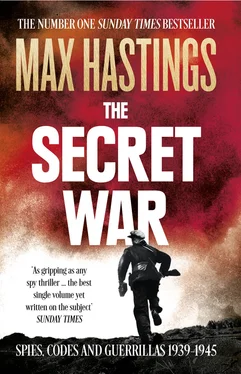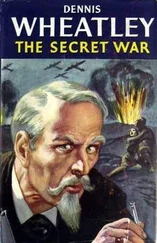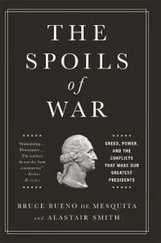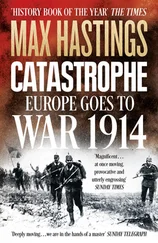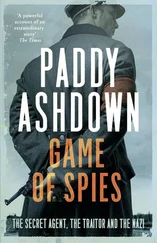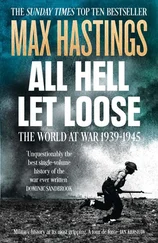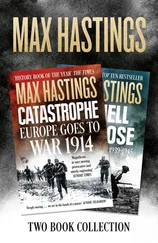German signals were at first intercepted by a battery of army wireless-operators stationed in an old naval fort at Chatham, a role later assumed by Gambier-Parry’s organisation at Whaddon Hall. In the early war years there were never enough operators, and both the RAF and the army were reluctant to acknowledge the priority of meeting GC&CS’s demands. Signals were brought in batches to Bletchley’s guardroom by motorcycle couriers, at all hours and often in dreadful weather, then distributed between the relevant huts. From an early stage, the codebreakers learned to identify German senders by the unencrypted preamble to their message texts, none of which was longer than 250 words. It was then a matter of sitting hunched over a deal table through the hours of a shift, pondering a jumble of numbers and letters from which only men – and Bletchley’s handful of women – with remarkable logical or mathematical powers might hope to extract fragments of meaning. ‘The ideal cryptanalyst,’ Stephen Budiansky has written, ‘was Beethoven with the soul of an accountant.’ When Christopher Morris was a new recruit to Bletchley he heard one of his senior colleagues, asked the requirements for the job, respond laconically, ‘Oh, I suppose a sharp pencil and a piece of squared paper.’ Morris himself thought that the main requisites – except at the exalted level of Knox, Turing, Welchman and later Max Newman – were ‘patience, accuracy, stamina, a reasonably clear head, some experience and an ability to work with others’.
They opened what became vast card indexes, stacked in shoeboxes along the sides of the huts, cataloguing enemy units, personnel, codenames, locations, abbreviations and military hardware; different Enigma keys were distinguished by colour – for instance, yellow, green, red and blue, respectively indicating Norway, Wehrmacht, army-Luftwaffe and air training codes. ‘When a new word came up in the message you were translating,’ wrote Hugh Skillen, ‘a new type of jet fuel, or machine part – you looked for it, and if it was not there, the indexer put it in with a reference time and date stamp.’ Bletchley’s meticulous record-keeping became a critical element in its triumphs.
For security reasons, the Park’s operations were rigidly compartmentalised, and there was little exchange of information or gossip between sections. Even Welchman remarked years later how little he knew about what colleagues were doing a few yards away from his own Hut. As the staff grew from hundreds into thousands, facilities lagged behind: a section head complained that two hundred men and women enjoyed the use of just one lavatory. The food in the Bletchley canteen was poor even by wartime standards. Former debutante Sarah Norton one night found a cooked cockroach in her meat: ‘I was about to return it to the catering manageress when my friend Osla, who had the appetite of a lioness with cubs, snatched the plate and said: “What a waste – I’ll eat it!”’ The nearest available delicacies outside the wire were to be found at the Station Inn in Bletchley town, which offered ox heart. Welchman recalled having to provide his own newspaper to wrap fish and chips at the local shop. The codebreakers worked around the clock in three rotating shifts, starting with 8 a.m. to 4 p.m. When the exhausted men and women cycled or took a bus through the blackout to their lodgings, they found few comforts: dim lighting, hot baths often rationed to one a week, draconian rules about inter-sex visiting.
It is deeply impressive that those who worked at Bletchley sustained such dedication while working day after day, month after month, in a drab world devoid of glamour, excitement, variety, glory and decorations. In Hut 3, the watch sat around a horseshoe table, translating deciphered signals, each one resembling a telegraph flimsy, forwarded from Hut 6. Ideally, decrypts were composed of complete German words, but often there were interruptions and corruptions in the texts, which demanded leaps of imagination from the linguists. William Millward recalled with shame a night when he invented a place named ‘Senke’, near Qatara in the North African desert – having forgotten that Senke was the German word for a geographical depression. Schoolmasters proved ideal as watch chiefs, wrote Peter Calvocoressi, because they were naturally meticulous: ‘If not satisfied, they would throw back a translation at even an eminent professor. It reminded me of Chief Examiners at “A” Level who would send back scripts to an Assistant Examiner to re-mark.’ No one could work at GC&CS who did not love brain games. There were dreary, idle yet sleepless lulls, when no traffic arrived for the watches to work on. Peter Hilton once used such a doodle time to compose a palindrome: ‘DOC NOTE, I DISSENT, A FAST NEVER PREVENTS A FATNESS. I DIET ON COD’.
Although Alan Turing was acknowledged as the highest intellect at Bletchley, its achievement was supremely a team effort; the creative input of some others, Welchman prominent among them, was almost as important as that of Turing. One night in February 1940, several months before the arrival of the first bombe, twenty-one-year-old Cambridge mathematician John Herivel was smoking a pipe before the fire in his billet, and concentrating furiously on encoded messages even as he drifted in and out of a doze. An inspiration struck him as he gazed with the mind’s eye at a German Enigma operator. He perceived such a man starting his morning’s work bored or weary or hungover, and thus not troubling to change the previous day’s ring setting on his machine before starting to cipher messages. Herivel scarcely slept that night, as he went on to deduce how such an act of carelessness might be detected, then exploited to break a message.
Welchman, who had supervised him at Cambridge, immediately saw the importance of this flash of insight, a marriage of mathematical brilliance to a grasp of human weakness. He told the young man fervently that he ‘would not be forgotten’, and indeed his inspiration became known as ‘the Herivel tip’. Dillwyn Knox had already identified another entry point to messages, rooted in operator errors and text settings – what the codebreakers christened ‘Cillis’ or ‘Sillies’. Welchman wrote later that Bletchley remained ‘entirely dependent on Herivel tips and Cillis from the invasion of France to the end of the Battle of Britain’. In other words, until the arrival of the bombes, codebreaking was being done by raw brainpower, without significant mechanical assistance: at this early stage, the British lagged behind their American counterparts in exploiting technology – both the US Army and US Navy codebreaking teams used Hollerith punched-card sorters, of a kind that only began to appear at Bletchley in May 1940, because chief codebreaker Col. John Tiltman had been sceptical about them. Ultra provided no important material during the summer of 1940, but several indications about the postponement of ‘Sealion’, the Nazi invasion of Britain, notable among them a September Luftwaffe message ordering the dismantling of air transport equipment at Dutch airfields.
Fred Winterbotham, the MI6 officer who eventually became overseer of the ‘Special Liaison Unit’ network which fed Ultra decrypts to commanders in the field, described the first bombe – christened ‘Agnus’, corrupted to ‘Agnes’ – as resembling ‘some Eastern goddess who was destined to become the oracle of Bletchley’. It was installed in Hut 11 on 14 March 1940, but suffered substantial teething troubles. Gordon Welchman made an important contribution to Turing’s creation by devising a ‘diagonal board’, an element introduced into the first really effective model, which came into service in mid-August. Agnes and its many successors were not computers, because they had no memory. They were instead electro-mechanical key-finding aids, six and a half feet high and seven wide, mounted in bronze-coloured cabinets, and containing thirty-six banks of high-speed electrically-driven Enigma replicas. Each bombe contained eleven miles of wiring and a million soldered contacts. Built by the British Tabulating Machine Company at Letchworth, they depended partly on components assembled in scores of local village halls, by casual workers who had no clue of the importance to the war effort of the twenty-six-way cables and other small electrical parts they contributed.
Читать дальше
